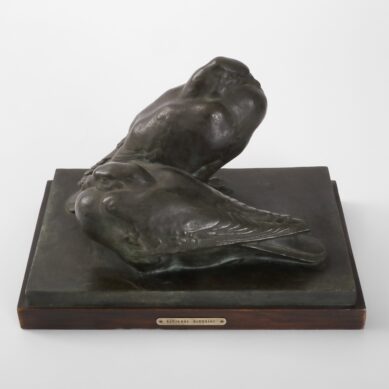You searched
Painter
Giovanni Zangrando
Are you interested in the sales or the purchase of his artworks?
We buy works of this artist
and of other painters and sculptors from the 16th century to the first half of the 20th century
The Berardi gallery offers a free and without obligation service for evaluation of ancient and modern art . To find your way in the art market, very complex and full of nuances, it is better to rely on a professional consultant who can answer fast and concretely to your needs. The clarity of the answers will resolve effectively the need to estimate or sell an asset.
Contact us immediately without commitment
Answers also in 24 hours:
Giovanni Zangrando
Giovanni Zangrando
Giovanni Zangrando was born in Trieste in 1867 and is one of the protagonists of painting in Trieste at the turn of the century. He came from a very humble family, his father was a carpenter and his mother a midwife, but as soon as he was sixteen, the Italian Charity Association selected him for a scholarship that would take him to Venice to attend the Academy of Fine Arts. His teachers included Cadorin, Franco and Molmetti.
Giovanni Zangrando then joined the group of artists who gravitated around the figure of Veruda and who, together with Grünhut and Rietti, had introduced echoes of French Impressionism to the city. In 1889, he attended the Munich Academy of Fine Arts following the teachings of Raab, Wagner, Gysis and Lenbach.
The Beginnings
In 1893, he won the Rittmayer competition held in Trieste and had the opportunity to go to Rome for two years, where he took a studio in Via Margutta, linking up with other painters and men of letters who had settled in the capital in those years, such as Cesare Pascarella and Antonio Mancini. Here he took part in a competition and came second with his work I naufraghi. Leaving Rome, he then spent time in Paris and other European capitals before returning, in 1895, to Trieste where he decided to open a studio and then, in 1905, a painting school together with Guido Grimani that enjoyed great fame until 1914.
At the outbreak of the First World War, Giovanni Zangrando, being an Italian citizen, was forced to flee Trieste still under Habsburg rule and took refuge with his wife, the model Miete Schmidt, and their son in Tuscany. He will return to his hometown at the end of the conflict, in a Trieste that is now Italian.
Giovanni Zangrando: a skilful portrait and landscape painter
Giovanni Zangrando was particularly successful as a portrait painter. He also painted the portrait of Sophie Hohenber, the wife of Habsburg Archduke Franz Ferdinand, whose assassination started the Great War. In order to paint the duchess’ portrait, the artist had to travel to Bohemia several times, to Konopiště Castle. Many portraits he made were exhibited at various events in which he participated. In fact, he was a guest at the National Exhibition in Rome in 1893 with the work Ritratto, and participated with another Ritratto at the Venice Biennale in 1907.
During his time in Trieste, he also participated in many editions of the Circolo Artistico, such as the one in 1928 exhibiting the two portraits Irene and Maria. In 1930 he participated with the two works Sunny Day and The Redhead. In 1935 he exhibited Nude; in 1939 he participated with Portrait and Landscape; and in the 1940 edition he presented Bosco del Cadore, a place where he often spent his holidays. Landscapes are a subject Giovanni Zangrando devoted himself to in parallel with figure paintings, and are mainly impressionistic landscapes taken from life, characterised by a vibrant and rapid brushstroke. For Giovanni Zangrando, art is in fact a continuous passionate observation.
A style with many influences
Giovanni Zangrando’s style evolved throughout his career: in Venice, he studied Venetian chromatism and came into contact with French Impressionism through Veruda; when he attended the Munich Academy, he was influenced by German Photorealism and Enlightenment; and after the Roman period, but especially following his stay in Paris, he lightened his palette by adopting the bright Impressionist mannerism. Giovanni Zangrando incorporated all the influences he received into a personal style that knew how to modulate a taste for truth, plays of light and a joyful, harmonious chromatism.
Giovanni Zangrando’s works are preserved not only in private collections but also in a number of Italian museums, especially in Trieste, such as The Widow (18949), Portrait of Giacomo Calligaris (1902) and Portrait of his Wife (1917) at the Revoltella Museum.
Giovanni Zangrando died in Trieste in 1941 and the following year the city organised a large posthumous exhibition to celebrate his painter.
Emanuela Di Vivona





